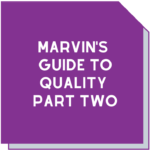From spreadsheets to solutions – implementing a new system
During March, we took part in the Future Labs Conference. As well as the excitement (and strangeness!) of being back in a face-to-face conference setting, we heard insights from speakers on how their labs are preparing for the future.
 One such speaker was Dr Shabnam Tarahi Tabrizi, Lab Manager at Nanosonics.
One such speaker was Dr Shabnam Tarahi Tabrizi, Lab Manager at Nanosonics.
She was instrumental in introducing and driving the implementation of an automated solution for the R&D Department at Nanosonics.
We sat down with Shabnam to discuss her process.
So what was your first step?
Nanosonics has a wide scope of work. We have different labs from science/R&D to engineering and manufacturing production.
The first step was really to identify the gaps and areas of improvement within the lab. We knew we wanted to harmonise lab safety protocols and regulations. Since we were also looking at obtaining NATA accreditation in the future, these requirements also had to be considered. It was immediately clear that we’d need a customised solution, particularly if this software system was to be rolled out across multiple labs.
I put together a comprehensive presentation which described a holistic approach. I demonstrated how the QMS could be integrated in one location and included information and justifications for the improvement. Then I presented it to management.
It was a bit nerve wracking because this was the first big hurdle. If they’d said no at this point, the process would have come to a halt. But fortunately, they were on board.
Then you began looking at system suppliers?
Not quite. It was important to engage the end users of the software. There were plenty of meetings with staff members, IT and QA people.
It’s particularly important to include IT and QA staff in the initial discussions because they will have specific questions about the product and the processes. If they’re not continually involved in the early stages, you could find yourself running into real problems down the track.
The people in the lab need to be consulted, particularly in the case of a large lab improvement project. You need to bring them on board and get ownership from the outset. Explain to them “here are the gaps, here are the solutions” so they understand where you’re coming from.
I also put together a project plan using a Gantt chart so I could track deadlines and outcomes to ensure they were being met.
That process would have clarified your search parameters
Yes. We needed something that would allow us to streamline our workflow, reduce potential errors and save our employees time (and the company money) by centralising our data into one program.
Once I had all the information together and all the requirements, I searched for suppliers that may be able to help. I narrowed it down to five companies and invited them to give us a demo of the product they thought would suit our needs.
This was a really interesting part of the process. One company sent reps to talk to us about what their product could do but didn’t feel the need to bring their product with them! We were quickly able to cut the field from five companies to just one.
What concerns did you have in particular?
The product had to be user friendly and fit for purpose. It needed to be effective and efficient and integrate all our QMS processes and documentation into one location. We needed to be sure it was secure, the software was validated and it integrated with all our equipment.
In the end Cybermetric and their GAGEtrak software was what we went with. Their customer service was excellent and although they’re based in the US, their responses to our questions were prompt.
Are there any other aspects labs should consider?
The very first thing to ask yourself is – do you need it?
The system should make your life easier and your processes smoother so make sure it makes sense for you.
Some other things to consider are:
- Make sure it’s compatible with your existing systems – that’s why it’s so important to involve IT right from the start
- Ask for the trial to use your own data, not whatever is pre-loaded into the system. This way, end users will be more engaged and likely to use the trial system
- If you have staff working at different times or different shifts, make sure the trial period is long enough to cover this. Because of Covid, we were able to extend the trial period because not everyone was able to get into the lab
- Involve your QA person or team so they can check compliance before you commit
- Data security is always an issue. But if you decide to only use the system on a single standalone computer, what happens if there’s a problem with that unit? We use a few standalone computers in each lab so that if one has an issue, we have a backup unit.
- Check the outputs. If you have a standard layout, be sure the system functionality can support this
- You will need admin users and general users, preferably two admins from each department. Make sure document templates are read only. You don’t want everyone making changes!
- Find out about training and what the best method is for your people. If you have staff scattered around the country, online could make more sense than face-to-face. Or there could be a combination of both. You know your people best and can advise them of the best training method for your lab
- Cost is always a factor. Keep management in the loop about any cost changes.
Do you have any further advice now you’ve implemented the system?
We were very happy with GAGEtrak but having an Australian vendor would have been ideal. It’s not a deal breaker, we just needed to arrange link ups during appropriate local time but an Australian supplier would have made this easier.
Check about the software updates and if they will affect any current functionality. If there are updates, how will the vendor train you in this? In our case, we received email notifications for updates and training awareness.
Don’t forget to update your documentation to reflect the changes in your system. This is particularly important if you have accreditation or certification, and the system is installed in between audit visits.
And if you’re really not sure how this will be received or how it will work across multiple departments, consider a phased rollout starting with just one lab.
The final word
Many thanks to Shabnam for sharing her thoughts on this journey.
Are you considering going through this process for your own lab?
Frameworks like ISO management system standards, e.g., ISO 17025, ISO 15189, and ISO 9001, can help labs to work through these kinds of projects.
Think about how you could use your supplier management and purchasing system, the requirements for equipment management, risk management and corrective action requirements. Then don’t be afraid to show your external auditor the glory that is your system and how it helps with projects like this. It’s your system; use it to its full potential.
If you’ve been through this process, we’d love to hear your experiences. And if you’re looking for help with the system you have now, contact Maree (0411 540 709) or email info@masmanagementsystems.com.au to set up a confidential discussion.
Remember, you don’t have to do this alone!
Download the article From spreadsheets to solutions






